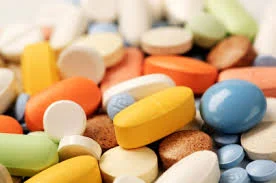To treat or not to treat: Antibiotics not always best for sinus infection
/Every year, more than 37 million Americans suffer from at least one episode of sinusitis. Typically, the symptoms include nasal congestion, runny nose and pressure or pain felt behind the eyes or teeth. These symptoms are caused by inflammation and infection of the sinuses.
The sinuses are air-filled spaces located behind the forehead, nose, cheeks and eyes. Normally, mucus drains from the sinus, while air is able to circulate within them. When the sinus opening becomes blocked, bacteria and germs can easily become overgrown, resulting in infection and discomfort.
Conditions that can put you at risk for developing a sinus infection include diseases which increase mucus production or a physical block of the sinus, such as a polyp. Allergies, which affect more than 67 million Americans each year, can also increase your risk. While we are no longer experiencing unseasonably warm weather, March’s early heat wave resulted in higher than normal pollen counts and is having lingering effects for those who suffer from seasonal allergies.
While one’s initial instinct might be to request antibiotics, growing research is showing that this is rarely the best course of action. A recent study in the Journal of the American Medical Association evaluated the efficacy of antibiotic treatment for sinus infection and found no difference in symptoms in those treated with antibiotics as compared to those who were given a placebo. This is because the vast majority of sinus infections are caused by viruses. In fact, only 2 percent of episodes are due to bacteria, which are the target of antibiotic medications. Antibiotics, unfortunately, are useless against viral sinus infections.
Viral infections are typically self-limited and the mainstay of therapy is symptom relief. Staying hydrated is key, because it helps thin the mucus and promotes drainage. Drinking warm non-caffeinated beverages helps keep you hydrated and can soothe a sore throat, while the steam helps loosen mucus. Over-the-counter medications, like ibuprofen or naproxen will help reduce pain and inflammation, while decongestants can help ease congestion.
The presence of green mucus is only a sign of infection -- not the cause. The white blood cells of your immune system contain greenish-colored components, which in a large number, can color the mucus with a greenish hue. These cells are present regardless of whether your infection is bacterial or viral.
Taking antibiotics “just in case” is not harmless and can result in an upset stomach, rash, or even a life-threatening allergic reactions. On a population level, the volume of antibiotics prescribed is a major factor in the increasing rates of bacterial resistance. In the U.S., over 70 percent of hospital-acquired infections involve bacteria resistant to at least one antibiotic. This trend is making it more difficult to treat infections that were once simple to cure.
When you suspect a sinus infection, the best course of action is to consult your doctor, so that he or she can determine whether or not antibiotics are appropriate. If your symptoms persist for longer than 10 days or get worse, you may require antibiotics. If you experience a change in vision, a sustained fever higher than 101°F, or confusion, it is important to seek medical care immediately, as these could be signs of a more concerning condition.

